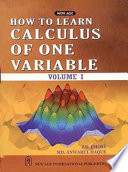 | Edward Olney - Calculus - 1871 - 396 pages
...for the purpose of uniformity in treating the several cases of differentiation. Iii. — Let MN be a line passing through the origin and making an angle of 45° with the axis of x. Its equation is y = x. Let P be any point in the line, AD = x, and PD = y. Let x take the... | |
 | Edward West Nichols - Geometry, Analytic - 1892 - 300 pages
...to its ordinate is always = 1, what kind of a path will it describe, and how is it situated ? Ans. A straight line passing through the origin, and making an angle of 45° with the X-axis. 11. The extremities of a line are the points (2, 1), ( — 1, — 2) : construct the line.... | |
 | Henry Charles Wolff - Mathematics - 1914 - 332 pages
...graph of the equation x2 + y2 = 25 is a circle, radius 5 and center at the origin. The equation of a straight line passing through the origin and making an angle of 45° what the positive direction of the axis of x is y = x. The graph of the equation y = x is a straight... | |
 | Civil engineering - 1918 - 176 pages
...arrangement of the scales of height and quantity and to the fact that the ordinate of any point on a straight line passing through the origin and making an angle of 45° with the axes equals its abscissa. The operation of this method of plotting will be facilitated if the station-rating... | |
 | H. E. Howard - Mathematics - 1926 - 192 pages
...equations are called Linear Equations. The very simplest of such equations is y =x, and its graph is a straight line passing through the origin and making an angle of 45° with the x axis. Exercise (i). We will now draw the graph of y = x2. Prepare a table of coordinates, in the... | |
 | Kiruthiga Sivaprasath - Science - 2008 - 994 pages
...same frequency and are in the same phase. From Eqs. (1) and (2), vy = -(3) This is the equation of a straight line passing through the origin and making an angle of tan ~ > X with the horizontal [Fig. 10.6 (a)]. YY tan to, = to and <(> = 0 (a) , = <ay ana $ =-^ Fig.... | |
 | Narinder Kumar - Physics - 2005 - 558 pages
...use the graphical method. The curves y = a and y = tan a are plotted. The equation y = a represents a straight line passing through the origin and making an angle of 45°. The points of intersection of the curves give the solution of a = tan a. The abscissae of the points... | |
 | Deepak Bhardwaj - Calculus, Integral - 2006 - 984 pages
...Solution. The given equations of the curves are y = x ...d) y = x3 ...(2) Equation (1) y = x represents a straight line passing through the origin and making an angle of 45° with x-axis. To find the points of intersection of the two curves, let us solve equations (1) and (2) simultaneously.... | |
 | J. D. Ghosh - Mathematics - 2008 - 962 pages
...other, ie, D(f) = R(f) in case of identity function. Letv=/W=* .-. у = x which is the equation of a straight line passing through the origin and making an angle of 45° with the x-axis, ie, an identity function represents straight lines passing through origin and making an angle... | |
 | S.K. Srivastava - 2006 - 382 pages
...by plotting the curves Y= a. and Y = tan a. The curve is shown in Fig. 2b.4. The equation Y= a gives a straight line passing through the origin and making an angle of 45° with X-axis. The equation Y= tan a gives a discontinuous curve. The point of intersection of these two curves... | |
| |